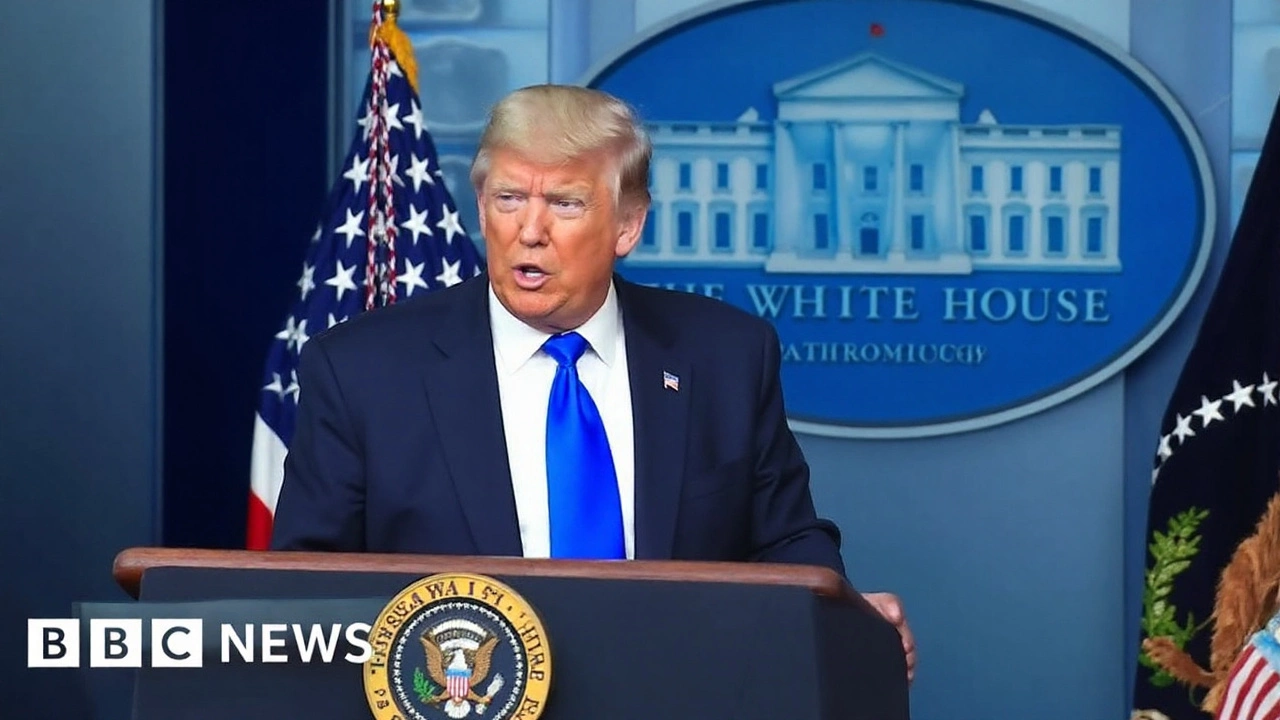Federal case opens after Charlotte light-rail killing
A routine ride home ended in a killing that now carries federal death-penalty exposure. Prosecutors say Decarlos Brown Jr., 34, stabbed 23-year-old Iryna Zarutska on a Charlotte light-rail train on August 22, a crime captured on surveillance cameras and followed by a rapid federal response. This week, the U.S. Attorney’s Office for the Western District of North Carolina charged Brown with committing an act causing death on a mass transportation system, a federal statute used in the most serious attacks on transit.
Investigators say the video shows the assailant attacking Zarutska as she sat in her seat, striking her three times before leaving the train. The FBI says a man believed to be Brown was later seen walking off the platform with a bloody knife in hand. He was already facing a local first-degree murder charge; the new federal case raises the stakes dramatically.
U.S. Attorney Russ Ferguson did not mince words, calling the stabbing a "terroristic act" aimed at a person simply trying to get home from work. He vowed to bring justice "to her and her family," language that signaled the government’s intent to pursue the harshest outcome available under federal law. FBI officials said agents moved in quickly to support Charlotte-Mecklenburg police, citing the risk to public safety and the need to preserve evidence across multiple jurisdictions.
Attorney General Pamela Bondi announced that federal prosecutors would take the lead, describing Brown as a repeat violent offender. She said the government would seek the maximum penalty and promised he would "never again see the light of day as a free man." In a separate statement, FBI leadership praised the joint effort and framed the case as a message to anyone targeting people on public transit.
The killing drew national attention within hours of the footage being released by the Charlotte Area Transit System. Political figures weighed in, including Donald Trump, who used social media to call for a swift trial and capital punishment. The post heightened the case’s visibility and added pressure to a prosecution already under intense public scrutiny.
Zarutska left Ukraine to escape war, built a life in North Carolina, and worked two jobs, including at a senior center and a pizza shop. Neighbors say she often looked after stray animals and had recently moved in with her partner. Despite outreach from the Ukrainian Embassy, her family chose to bury her in the United States; Ferguson said relatives told him, "She loved America." He and an FBI special agent called her mother and uncle directly to explain the federal charges and next steps.

What the federal charge means, and the fallout
The statute used here is a rarely invoked but powerful law that targets violence against railroads and mass transit systems. It sits in Title 18 of the U.S. Code and allows life in prison or capital punishment when a death occurs. In plain terms, the federal count puts Brown in a category where the government can consider the death penalty, something that requires internal reviews and the Attorney General’s authorization before it ever reaches a jury.
The state case is not going away. Under the "dual sovereignty" doctrine, North Carolina can try Brown for murder while the federal case proceeds on its own track. Sometimes the cases run in parallel; sometimes one pauses for the other. It depends on schedules, discovery, and whether defense counsel files motions to move or dismiss charges. If the case goes capital, the court will set a longer timeline and additional deadlines because death-eligible prosecutions are document-heavy and complex.
From here, a federal grand jury will weigh an indictment if one hasn’t already been returned under seal. After that, Brown would be arraigned in federal court, and lawyers would argue over pretrial detention, evidence, and any statements. If prosecutors seek a capital sentence, the case splits into two phases at trial: guilt/innocence and, if there’s a conviction, a penalty phase where jurors hear aggravating and mitigating evidence. Defense teams typically bring in specialists on mental health, trauma, and background, while prosecutors focus on prior convictions, the attack itself, and its impact on victims.
Officials have not released a complete timeline of Brown’s movements before and after the attack. What is public is the surveillance footage and the claim that the suspect walked away holding a knife. Prosecutors say they will use the video, witness accounts, and forensic testing to build a tight case. Expect the defense to challenge identification, chain of custody, and any statements, and to push to exclude the most inflammatory parts of the footage from a jury if possible.
Beyond the courtroom, the killing is already reshaping the conversation about transit security in Charlotte. CATS has cameras across the system and transit police on patrol, but riders and some state officials want more. The ideas on the table are familiar from other large cities: more uniformed officers on trains and platforms, better lighting, updated cameras with live monitoring, and new emergency call points that trigger faster responses.
- Increased patrols at peak hours and late night runs.
- Faster coordination between CATS, local police, and the FBI when violent crimes occur.
- Upgraded surveillance tech that can flag emergencies in real time.
- More visible help buttons and announcements so riders know how to report threats.
Some Republicans in the state have pointed to the stabbing as proof that tougher enforcement is overdue. They argue that serious crimes on transit should trigger automatic federal involvement. Others, including some city leaders, say the answer is a mix of policing, smart design, and rider support, not just more arrests. Civil rights advocates caution against policies that push people off transit or encourage sweeping stops that have little to do with violent crime.
At the center of the story is a young woman who moved across an ocean for safety. Zarutska built routines here: shifts at work, evenings with her partner, time with neighborhood pets. Friends say she was quick to help an elderly neighbor carry groceries and always picked up after strays. Those personal details, small as they may sound, shape how juries and communities think about harm and loss when a case reaches a penalty phase.
Her killing also touches a larger immigration and resettlement picture. Since 2022, federal data show more than 200,000 Ukrainians have entered the United States through the Uniting for Ukraine program and other pathways. Many settled with sponsors, found immediate work, and started over. Community groups in North Carolina say they’ve seen a steady flow into the Charlotte region, where jobs and host families are available. The shock after Zarutska’s death has sparked offers of counseling and legal help for newcomers who now fear riding transit at night.
Expect more public records to emerge in the weeks ahead. Prosecutors will file a detention memo outlining why they believe Brown should remain in federal custody. Defense lawyers will push back, likely asking for access to the raw camera files and any forensic testing on the knife. If the Attorney General authorizes a capital prosecution, that notice typically lands months after indictment, not days.
There’s also the political layer that is impossible to ignore. Trump’s demand for capital punishment added fuel to an already emotional case. Officials in Charlotte have tried to keep their language measured, but they know the city’s image is on the line alongside rider safety. Public confidence is a fragile thing; one attack can depress ridership for months if people feel alone in a rail car after midnight.
For families like Zarutska’s, the next steps are quieter and harder: arranging a funeral far from home, dealing with authorities in two countries, and sitting with a grief that will outlast any verdict. Ferguson said he and an FBI special agent called her mother and uncle to explain the federal case directly, a gesture meant to show that the system sees the person before the paperwork. The family chose to bury her here, in the place she decided to live.
Brown remains charged locally with first-degree murder, and now faces a federal count that could bring life in prison or execution. Prosecutors say they will pursue every avenue. The broader fight—how to keep trains safe and riders confident—will not end with a courtroom victory. It will turn on the unglamorous work of staffing platforms, fixing cameras, and making sure someone answers the call button when a rider presses it.
